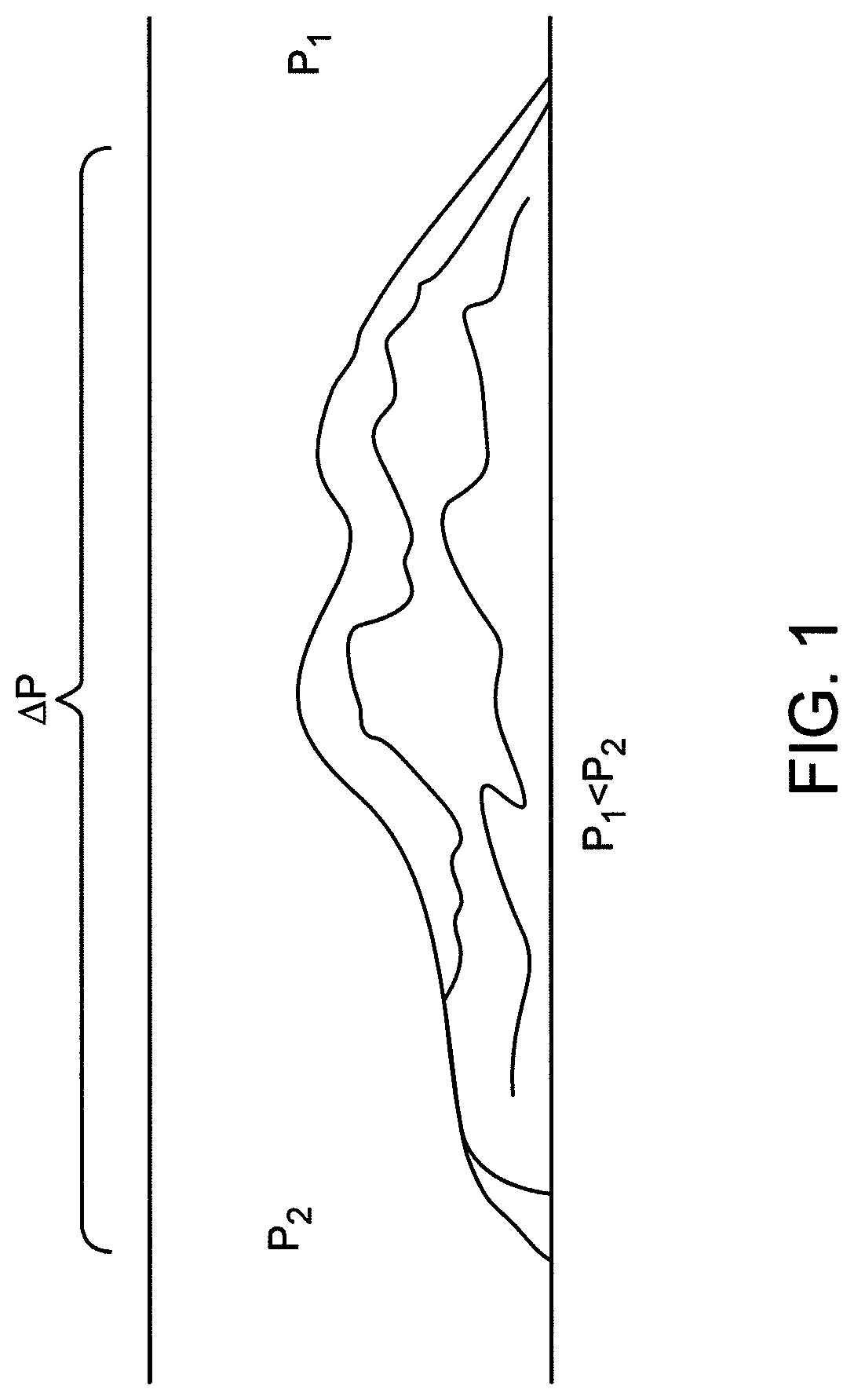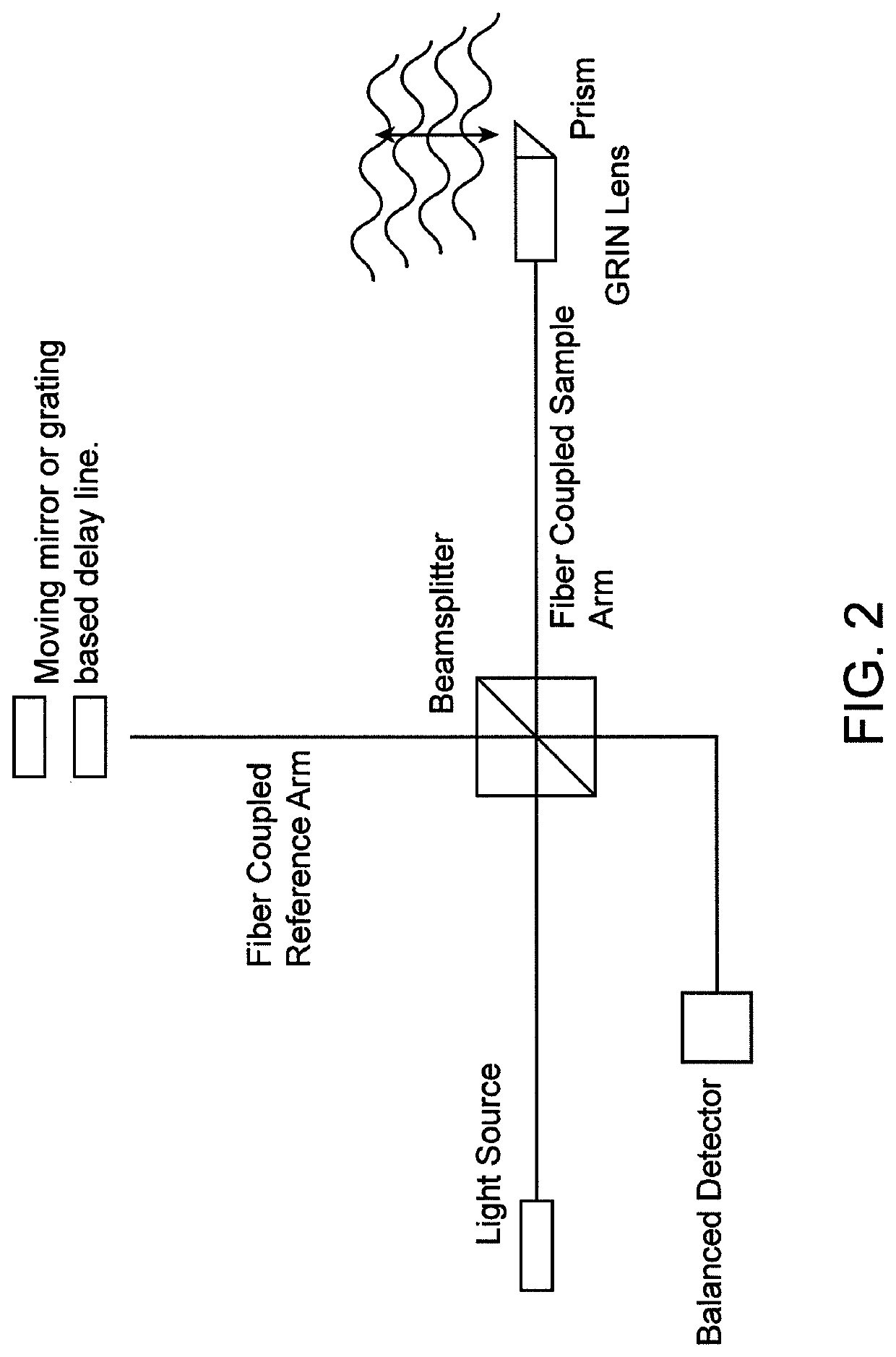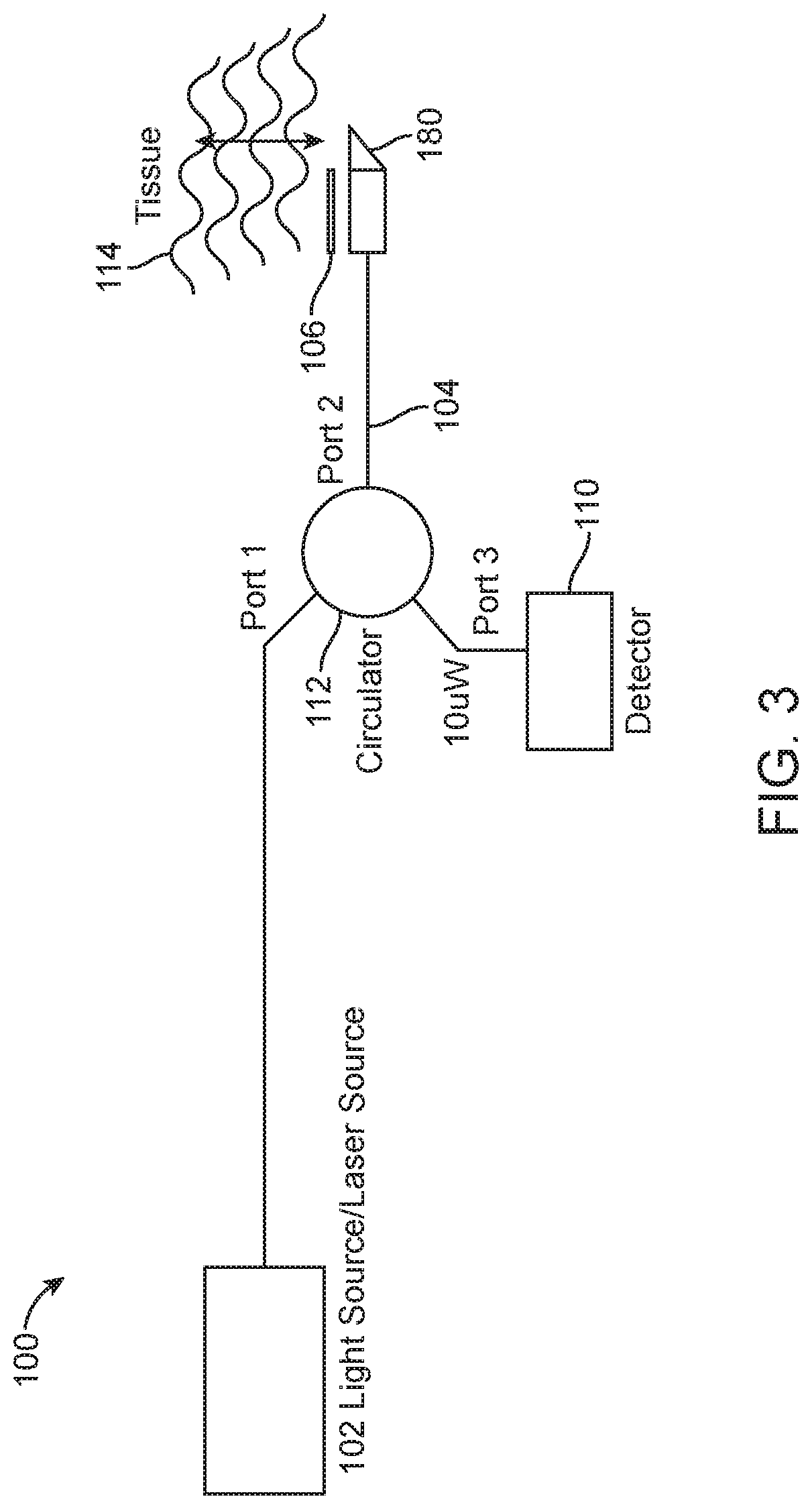Optical pressure sensor assembly
a sensor and optical technology, applied in the field of optical pressure sensing/sensor assemblies, can solve the problems of reducing blood circulation to the brain and heart, affecting the blood circulation to the arms, legs, stomach and kidneys, and increasing the risk of stroke and heart diseas
- Summary
- Abstract
- Description
- Claims
- Application Information
AI Technical Summary
Benefits of technology
Problems solved by technology
Method used
Image
Examples
Embodiment Construction
[0074]Embodiments described herein provide for optical pressure sensor assemblies that utilize the basic framework of an imaging system to provide pressure measurements. Although any suitable optical or imaging modality can be used with the contemplated invention(s), optical coherence tomography (OCT) is described as an illustrative example of how the invention is compatible with an imaging system. As such, a general overview of OCT is provided below, followed by a description of the optical pressure sensor assemblies that can be used with OCT or other imaging systems. It is to be appreciated, that the OCT discussion is for illustration purposes and not limiting the invention to any specific imaging modality.
I. OCT System General Overview
[0075]OCT has been proposed as one technique that may be particularly helpful for imaging regions of tissue, including within a body lumen such as a blood vessel. At a basic level, OCT relies on the fact that light traveling from a source and scatte...
PUM
| Property | Measurement | Unit |
|---|---|---|
| outer diameter | aaaaa | aaaaa |
| outer diameter | aaaaa | aaaaa |
| wavelength | aaaaa | aaaaa |
Abstract
Description
Claims
Application Information
 Login to View More
Login to View More - R&D
- Intellectual Property
- Life Sciences
- Materials
- Tech Scout
- Unparalleled Data Quality
- Higher Quality Content
- 60% Fewer Hallucinations
Browse by: Latest US Patents, China's latest patents, Technical Efficacy Thesaurus, Application Domain, Technology Topic, Popular Technical Reports.
© 2025 PatSnap. All rights reserved.Legal|Privacy policy|Modern Slavery Act Transparency Statement|Sitemap|About US| Contact US: help@patsnap.com



